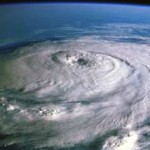I am still working on an historical novel set in 1880s Idaho Territory, when the specter of Indians and whites clashing loomed as a real threat. If I had to write a battle scene, (not something I usually do) what would make it compelling?
Writing Tip for Today: Fiction feeds on conflict, but handling a hectic and violent scene takes special skill. Here are some thoughts I had as I read and contemplate scenes in historical novels:
- Know Your Focus. A high-action scene has lots of things happening at once. Readers will quickly become lost or confused if the scene’s focus is blurry. Your POV character can only pay attention to a couple things at once, so the writer must manipulate the camera, from tight shots to wide vistas and back, without jarring the reader.
- Employ Reframing. In cinema, a scene with more than two or three creates a problem–the main character can’t interact with everyone at the same time. Directors often reframe a scene, first getting shots of the Character with one or two others, then showing that Character interacting (however briefly) with a new set of people and back again.
- Balance Emotions With Action. Many times, a high-action scene can be slowed too much when the writer inserts too many asides–those emotional thoughts and feelings that coincide with the action. In real life, people often don’t have time to react. Save some of the emotions for afterwards. Use verbs during high-action that go beyond the action and are loaded with emotion as well. For example, “He slunk away,” implies shame.
- Short sentences. Use short sentences to describe high-pace action. Don’t try to link a chain of events by starting sentences with “As.”
- Active Verbs and Teutonic Origins. Eschew passive construction and instead use active verbs, if possible of Teutonic (German, for instance) origin rather than Romance Language (Spanish, French, Italian) words. Guttural, hard sounds add to the energy of a high-action scene.





Great advice – as usual.
I find people have difficulty with balancing the need for movement in action scenes with the need for tension build up. Much like sex scenes are difficult.
Perry, I hadn’t thought of sex scenes, but it makes sense. For me, the more important elements of high-action scenes is the aftermath.
~Linda
Clive Cussler is a master. Just when the protagonist beats a bad guy or avoids an explosion- he ups the stakes with another threat. His readers never get a chance to catch their breath. The best action resolution is when the reader realizes they have been holding their breath.
Good point, James! In women’s fiction I hardly ever have car chases or things blowing up. But you’re right.
~Linda
Especially interesting (and something I had not consciously thought about before) was using words of Germanic origin.